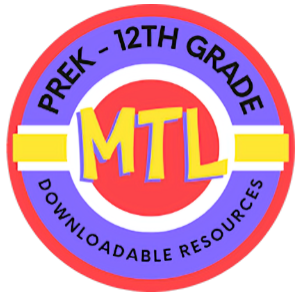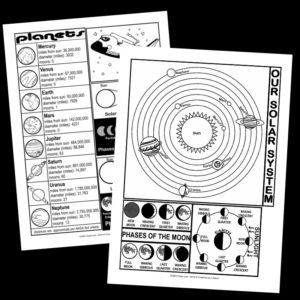Category: Space & Astronomy
- Home
- /
- Shop
- /
- By Subject
- /
- Science
- /
- Branch of Science
- /
- Space & Astronomy
Showing all 18 resultsSorted by latest
-
 $2.75Buy Now
$2.75Buy NowHelp your students learn all about a lunar eclipse while they create a keepsake, 10-page mini book!
⭐ What’s Included:
Five .pdf pages that students can cut in half (or can be pre-cut) to create
a 10-page mini book. This material is designed for 3rd-5th grade students and with kid-friendly explanation of lunar eclipses.⭐Students will learn:
- When a lunar eclipse can happen
- The difference between and what creates the umbra and penumbra shadows
- What must happen for a total lunar eclipse to occur
- Why total lunar eclipses can be so colorful
- The different phases of a lunar eclipse
On the last page of the mini book, students will draw their own lunar eclipse illustration.
-
Sale!
 Buy Now
Buy Now$3.00Original price was: $3.00.$2.25Current price is: $2.25.Hands on learning! This BUNDLE includes two products that will help students gain an understanding of what happens during a solar eclipse!
What’s included:
-
– A solar eclipse activity designed to help students visualize a solar eclipse through using common objects to actually demonstrate one.
-
– A solar eclipse activity designed to help students visualize a solar eclipse by creating a simple paper model of an eclipse.
-
-
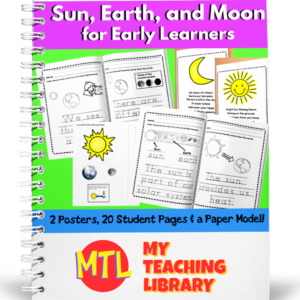 $3.00Buy Now
$3.00Buy NowThis unit is designed to help early learners learn about the sun, earth and moon through fun, engaging activities! Students will learn that the sun supplies heat and light to the earth, that the moon reflects light from the sun and rotates around the earth, that there are different phases of the moon (specifically in this unit: full, half and crescent), and more! Includes:
– 2 posters
– 20 student pages
– 1 interactive model craft -
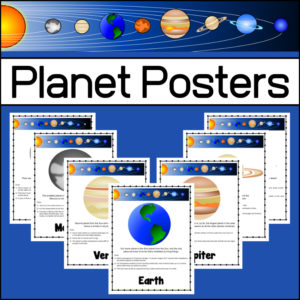 $3.00Buy Now
$3.00Buy NowCreate excitement and interest about the planets of our solar system by displaying these colorful and informative posters!
I’ve included 2 sets (one with and one without Pluto)-
- – Set one: Mercury, Venus, Earth, Mars, Jupiter, Saturn, Uranus, Neptune
- – Set two: Mercury, Venus, Earth, Mars, Jupiter, Saturn, Uranus, Neptune, Pluto (described as now classified as a ‘dwarf planet’)
-
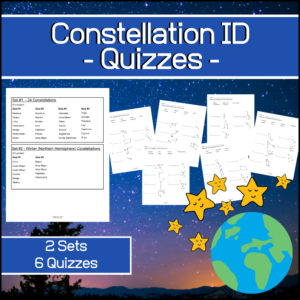 $2.50Buy Now
$2.50Buy NowUse this resource, Constellation Quizzes, to assess student knowledge of the imaginary star outlines or patterns on our ‘celestial sphere’ or they can be used simply as worksheets during the learning of the constellations! I’ve included 2 sets (with a total of 6 quizzes).
Each quiz will give students pictures and names of constellations and students will need to identify (match) each.
-
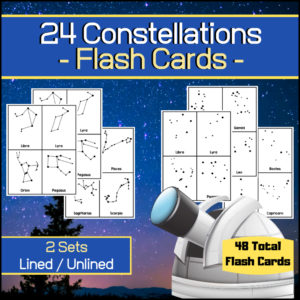 $3.00Buy Now
$3.00Buy NowThis Astronomy / Science resource, Constellation Flashcards, contains 2 sets of 24 constellations for a total of 48 cards. (Includes Astrological / Zodiac Constellations)
- Set one has lines that show the stars connected to create the constellation.
- Set two shows only the stars of the constellation (no lines). You can use set two to have students learn the ‘grouping of the stars’ as they actually see them in the sky -or- you can allow students to actually draw the lines on each card to help learn the constellations.
-
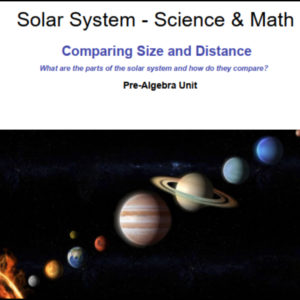 $5.00Buy Now
$5.00Buy NowComplete Solar System Science – Math Unit designed to help middle school students understand and compare the sizes of the parts of our solar system and how they compare. This unit will take at least 2 weeks to complete.
Included: Teacher’s Guide, Student Workbook, Answer Keys
-
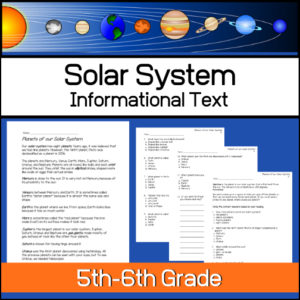 $1.75Buy Now
$1.75Buy NowHelp students develop their reading comprehension skills as they gain knowledge about the planets within our solar system with this informational article and assessment questions. This has been written for 5th-6th grade classrooms. The assessment includes 11 multiple choice questions, 1 opinion, short answer question and asks students to draw the planets in relation to the sun. Answer Key provided.
Flesch-Kincaid Grade Level: 6.5
Grade level: Sixth Grade
Automated Readability Index: 5.5
Grade level: 8-9 yrs. old (Fifth graders) -
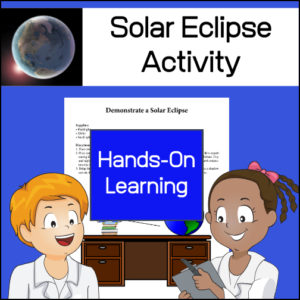 $1.50Buy Now
$1.50Buy NowHands on learning! A solar eclipse activity designed to help students visualize a solar eclipse through using common objects to actually demonstrate one.
-
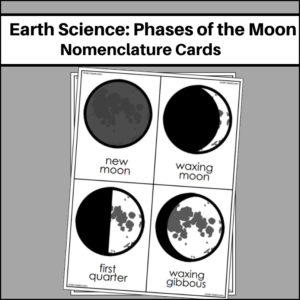 $2.00Buy Now
$2.00Buy NowThis resource will help students learn the 8 phases of the moon: new moon, waxing moon, first quarter, waxing gibbous, full moon, waning gibbous, last quarter and waning crescent.
-
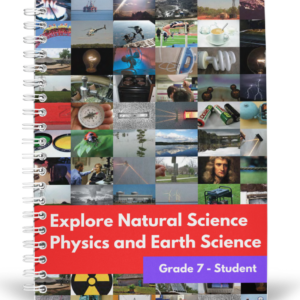 $15.00Buy Now
$15.00Buy NowThis physics and earth science student textbook is designed to use with middle school students (specifically those learning at or ready for 7th grade work). View the table of contents in the description below. Preview video here.
Get the TEACHER’S EDITION here!
Bundle and Save: 7th Grade Science Curriculum Bundle
-
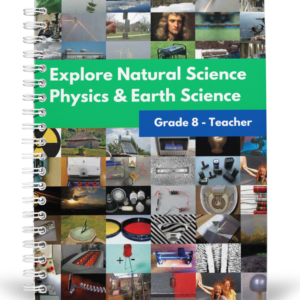 $15.00Buy Now
$15.00Buy NowThis is the teacher’s edition for Natural Science: Physics & Earth Science – Grade 8 (Student Edition)
Bundle and Save: 8th Grade Science Curriculum Bundle
-
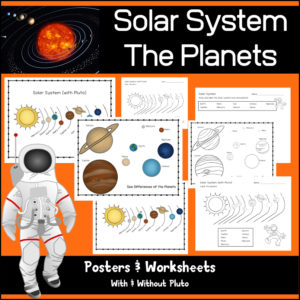 $3.00Buy Now
$3.00Buy NowThis Solar System product will help students learn and reinforce their knowledge of the order of the planets and to be able to visual size differences of the planets! Each color poster has a duplicate b/w poster that can be used as a student handout. There are also worksheets for students to complete (with and without word banks). This resource provides 2 sets of all resources – One which includes the dwarf planet of Pluto and one that does not.
-
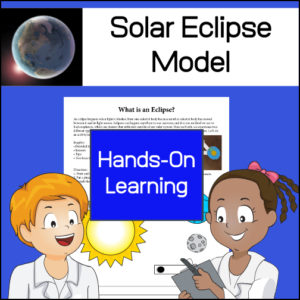 $1.50Buy Now
$1.50Buy NowHands-on learning! This solar eclipse activity has been designed to help students visualize a solar eclipse by creating a simple paper model of one.
-
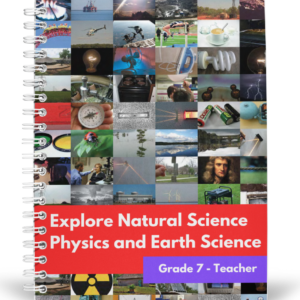 $15.00Buy Now
$15.00Buy NowThis is the teacher’s edition for Natural Science: Physics & Earth Science – Grade 7 (Student Edition)
Preview the student edition here.
Bundle and Save: 7th Grade Science Curriculum Bundle
-
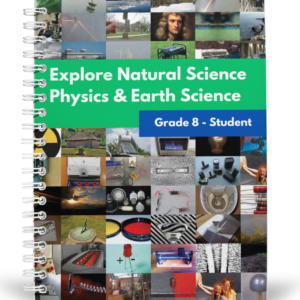 $15.00Buy Now
$15.00Buy NowThis Physics and Earth Science student textbook is designed to use with middle school students (specifically those learning at or ready for 8th grade work). View the table of contents in the description below.
Preview video of the companion 8th Grade Science: Biology & Chemistry textbook here.
Get the TEACHER’S EDITION here!
Bundle and Save: 8th Grade Science Curriculum Bundle
-
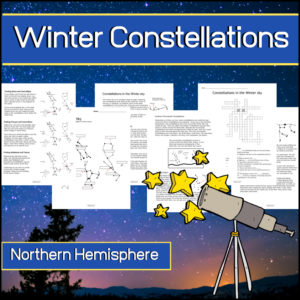 $3.00Buy Now
$3.00Buy NowExplore the Northern Hemisphere’s Winter constellations with this resource! Students will learn…
- What are the major constellations?
- What is the Greek Mythology behind them?
- What major stars will help guide them through the night sky?
- How is Orion the ‘key’ to locating the main constellations?
- What is the name of the North Star, and which constellation is it in?
- What is the brightest star in the sky?
Students will learn about the following constellations:
- Orion
- Canis Major
- Canis Minor
- Gemini
- Auriga
- Pleiades
- Taurus
- Draco
- Ursa
- Major
- Ursa Minor
- Cepheus
- Cassiopeia
They will learn the location of the following stars:
- Pollux
- Castor
- Capella
- Procyon
- Sirius
- Betelgeuse
- Rigel
- Aldebaran
- Capella
- Polaris
They will also learn which constellations are called the Northern Circumpolar constellations PLUS the Greek Mythology behind these major constellations!
Student activity sheets include:
- Fill in the blank (constellation and star names for the ‘Winter Sky’)
- Draw and name (the five circumpolar constellations and the North Star)
- Crossword Puzzle (in which they will use the information within the resource to gather answers)
Suggested follow up activities:
- Assign students to go outside after dark, find and draw the constellations they see and can identify.
- Visit a local planetarium
